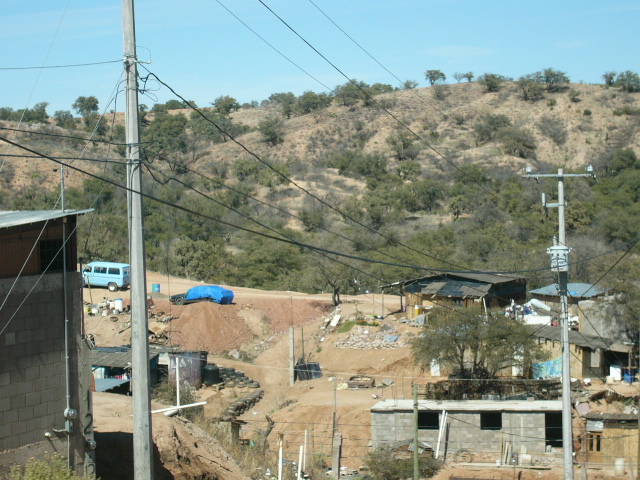|
BORDERLINKS
|
|
FIELDTRIP IMPRESSIONS
Going to Mexico on our fieldtrip, was much different than any other time I went there. I experienced the lifestyle, culture and shared part of my day with a Mexican family. It was interesting talking to them about all we learned so far through our readings, lectures and the speeches from U.S. border patrol and the Borderlinks crew. The family I had lunch with had a few family members that tried to cross the border illegally, and when they were telling us these stories they were shy about it, and scarred to tell us the details.
They all made it and are now living in the U.S. This reminded me of the book by Cathy Small “Voyages: from Tongan Villages to American suburbs” were everyone still keeps in touch with their relatives or friends back home, sends money back, or visits often. They told us that the reason why they didn’t get a green card or visa to be able to cross the border is not only because of their high cost and long wait; but mostly because they wouldn’t want to live in a place where: “You live to work and you can’t never enjoy your time”; this reminded me of the book I read for our class, called “Language” by Amitava Kumar from his “Passport Photos”, were Amitava, a photo journalist, describes how every immigrant still remains attached to his country .It was unbelievable how many people lived in their mistreated small house, how bad the whole neighborhood looked, how poorly they live… but they’re still happy to be around their family and friends. What I learned on this trip, is that families all have chances to make improvements in their lives: the maquiladoras that started to open in Nogales offered many decent work positions; their universities are extremely affordable to anyone; and like the chief from the U.S. Border patrol told us, they all have legal opportunities to get in the U.S. Even though they have chances, Nogales is a very poor place; and just like Moroccans lived poorly back in Italy, Mexicans are their example here in America. This comparison was made by David McMurray in “In & out of Morocco: Smuggling and Migration in a Frontier Boomtown” a book that we had to read during our course, which I thought was very true! I was impressed by the presentation that the border patrol gave us. I didn’t think that crossing the border was an everyday, all-day activity; that so many officers were needed to patrol. But it is true that migrants jumping the fence often caused all sorts of fights between the border patrol and the coyotes, with big losses on both sides. We are supposed to relate sources from our course in this paper, but I think that the whole experience of going to the place were an immigrant lives, see their conditions, their desire of a wealthier life really made all of us understand how hard it has to be for them, and made us realize that the horrible stories that we heard or watched on videos during our classes are really true. This field
trip really opened my eyes and made me realize how events may be unfair in
ones life, but you have to find a way around it, or in this case “over”
it. Overall, what impressed me the most throughout the whole trip, all the speeches we heard, the discussion we made in class, the readings… is how the crew from Borderlinks fights hard for their good cause. They all do believe deeply in what they’re doing, and just like one of our guide told us, it’s not about the money, because there are many more ways to make more money than that. The reward, the personal satisfaction that they get just by the smallest achievements is worth much more that a paycheck.
|
| Return to my HomePage |


